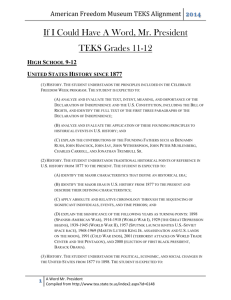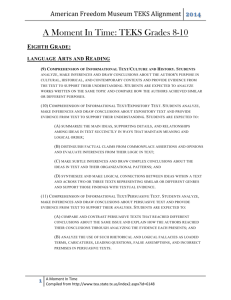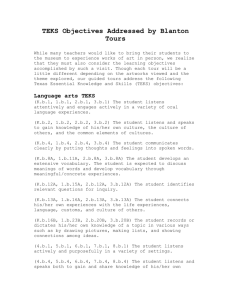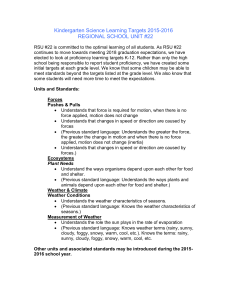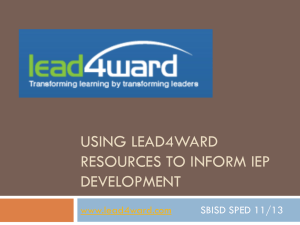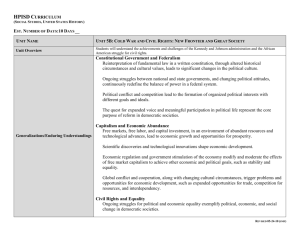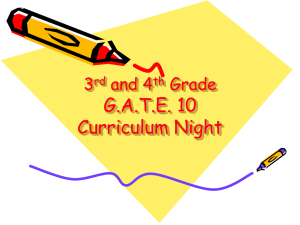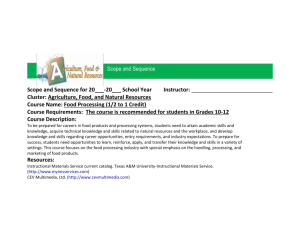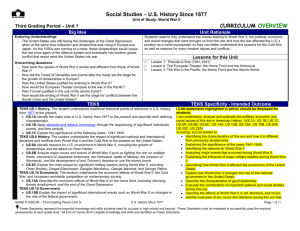Spies, Lies and Oh My`s - American Freedom Museum
advertisement
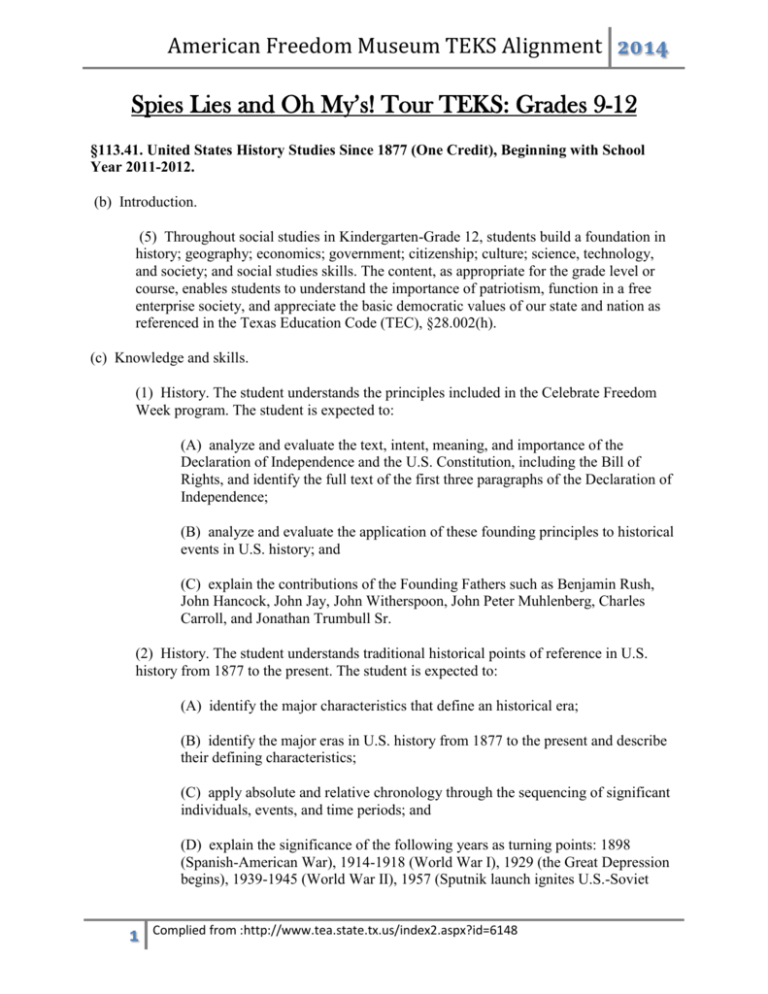
American Freedom Museum TEKS Alignment 2014 Spies Lies and Oh My’s! Tour TEKS: Grades 9-12 §113.41. United States History Studies Since 1877 (One Credit), Beginning with School Year 2011-2012. (b) Introduction. (5) Throughout social studies in Kindergarten-Grade 12, students build a foundation in history; geography; economics; government; citizenship; culture; science, technology, and society; and social studies skills. The content, as appropriate for the grade level or course, enables students to understand the importance of patriotism, function in a free enterprise society, and appreciate the basic democratic values of our state and nation as referenced in the Texas Education Code (TEC), §28.002(h). (c) Knowledge and skills. (1) History. The student understands the principles included in the Celebrate Freedom Week program. The student is expected to: (A) analyze and evaluate the text, intent, meaning, and importance of the Declaration of Independence and the U.S. Constitution, including the Bill of Rights, and identify the full text of the first three paragraphs of the Declaration of Independence; (B) analyze and evaluate the application of these founding principles to historical events in U.S. history; and (C) explain the contributions of the Founding Fathers such as Benjamin Rush, John Hancock, John Jay, John Witherspoon, John Peter Muhlenberg, Charles Carroll, and Jonathan Trumbull Sr. (2) History. The student understands traditional historical points of reference in U.S. history from 1877 to the present. The student is expected to: (A) identify the major characteristics that define an historical era; (B) identify the major eras in U.S. history from 1877 to the present and describe their defining characteristics; (C) apply absolute and relative chronology through the sequencing of significant individuals, events, and time periods; and (D) explain the significance of the following years as turning points: 1898 (Spanish-American War), 1914-1918 (World War I), 1929 (the Great Depression begins), 1939-1945 (World War II), 1957 (Sputnik launch ignites U.S.-Soviet 1 Complied from :http://www.tea.state.tx.us/index2.aspx?id=6148 American Freedom Museum TEKS Alignment 2014 space race), 1968-1969 (Martin Luther King Jr. assassination and U.S. lands on the moon), 1991 (Cold War ends), 2001 (terrorist attacks on World Trade Center and the Pentagon), and 2008 (election of first black president, Barack Obama). (4) History. The student understands the emergence of the United States as a world power between 1898 and 1920. The student is expected to: (A) explain why significant events, policies, and individuals such as the SpanishAmerican War, U.S. expansionism, Henry Cabot Lodge, Alfred Thayer Mahan, Theodore Roosevelt, Sanford B. Dole, and missionaries moved the United States into the position of a world power; (B) evaluate American expansionism, including acquisitions such as Guam, Hawaii, the Philippines, and Puerto Rico; (C) identify the causes of World War I and reasons for U.S. entry; (D) understand the contributions of the American Expeditionary Forces (AEF) led by General John J. Pershing; (E) analyze the impact of significant technological innovations in World War I such as machine guns, airplanes, tanks, poison gas, and trench warfare that resulted in the stalemate on the Western Front; (F) analyze major issues such as isolationism and neutrality raised by U.S. involvement in World War I, Woodrow Wilson's Fourteen Points, and the Treaty of Versailles; and (7) History. The student understands the domestic and international impact of U.S. participation in World War II. The student is expected to: (A) identify reasons for U.S. involvement in World War II, including Italian, German, and Japanese dictatorships and their aggression, especially the attack on Pearl Harbor; (B) evaluate the domestic and international leadership of Franklin D. Roosevelt and Harry Truman during World War II, including the U.S. relationship with its allies and domestic industry's rapid mobilization for the war effort; (C) analyze the function of the U.S. Office of War Information; (D) analyze major issues of World War II, including the Holocaust; the internment of German, Italian, and Japanese Americans and Executive Order 9066; and the development of conventional and atomic weapons; 2 Complied from :http://www.tea.state.tx.us/index2.aspx?id=6148 American Freedom Museum TEKS Alignment 2014 (E) analyze major military events of World War II, including the Battle of Midway, the U.S. military advancement through the Pacific Islands, the Bataan Death March, the invasion of Normandy, fighting the war on multiple fronts, and the liberation of concentration camps; (F) evaluate the military contributions of leaders during World War II, including Omar Bradley, Dwight Eisenhower, Douglas MacArthur, Chester A. Nimitz, George Marshall, and George Patton; and (G) explain the home front and how American patriotism inspired exceptional actions by citizens and military personnel, including high levels of military enlistment; volunteerism; the purchase of war bonds; Victory Gardens; the bravery and contributions of the Tuskegee Airmen, the Flying Tigers, and the Navajo Code Talkers; and opportunities and obstacles for women and ethnic minorities. (8) History. The student understands the impact of significant national and international decisions and conflicts in the Cold War on the United States. The student is expected to: (A) describe U.S. responses to Soviet aggression after World War II, including the Truman Doctrine, the Marshall Plan, the North Atlantic Treaty Organization, the Berlin airlift, and John F. Kennedy's role in the Cuban Missile Crisis; (B) describe how Cold War tensions were intensified by the arms race, the space race, McCarthyism, and the House Un-American Activities Committee (HUAC), the findings of which were confirmed by the Venona Papers; (C) explain reasons and outcomes for U.S. involvement in the Korean War and its relationship to the containment policy; (D) explain reasons and outcomes for U.S. involvement in foreign countries and their relationship to the Domino Theory, including the Vietnam War; (E) analyze the major issues and events of the Vietnam War such as the Tet Offensive, the escalation of forces, Vietnamization, and the fall of Saigon; and (F) describe the responses to the Vietnam War such as the draft, the 26th Amendment, the role of the media, the credibility gap, the silent majority, and the anti-war movement. (10) History. The student understands the impact of political, economic, and social factors in the U.S. role in the world from the 1970s through 1990. The student is expected to: (A) describe Richard M. Nixon's leadership in the normalization of relations with China and the policy of détente; 3 Complied from :http://www.tea.state.tx.us/index2.aspx?id=6148 American Freedom Museum TEKS Alignment 2014 (B) describe Ronald Reagan's leadership in domestic and international policies, including Reaganomics and Peace Through Strength; (C) compare the impact of energy on the American way of life over time; (D) describe U.S. involvement in the Middle East such as support for Israel, the Camp David Accords, the Iran-Contra Affair, Marines in Lebanon, and the Iran Hostage Crisis; (E) describe the causes and key organizations and individuals of the conservative resurgence of the 1980s and 1990s, including Phyllis Schlafly, the Contract with America, the Heritage Foundation, the Moral Majority, and the National Rifle Association; and (F) describe significant societal issues of this time period. 4 Complied from :http://www.tea.state.tx.us/index2.aspx?id=6148
